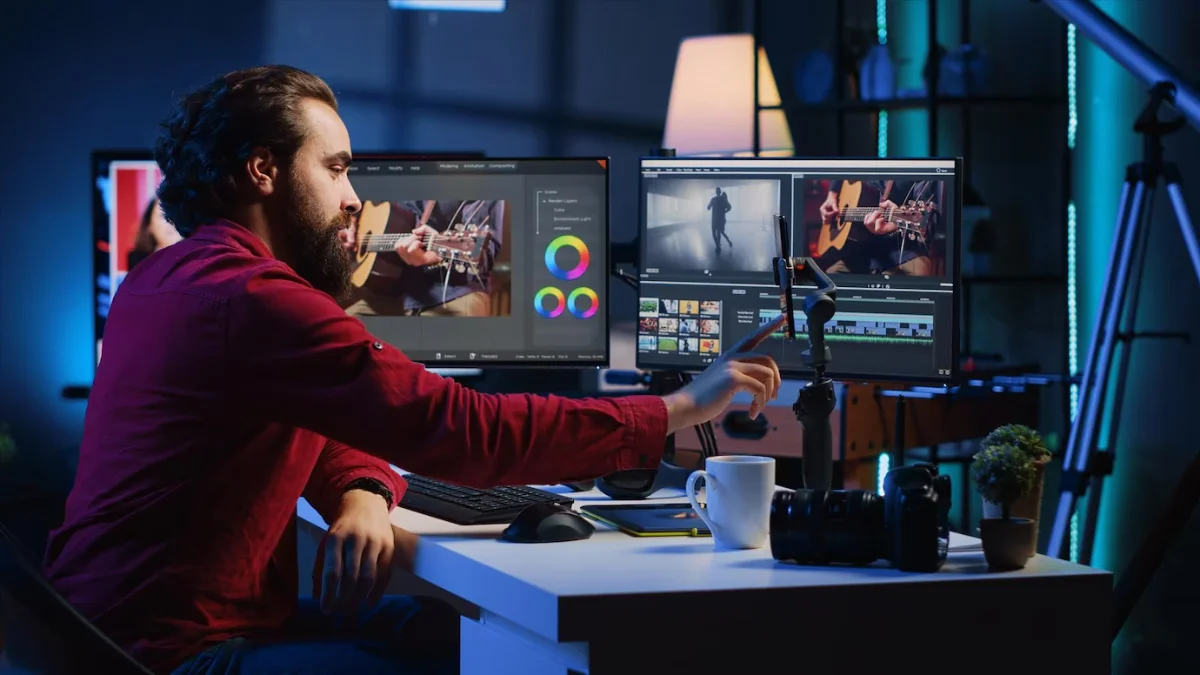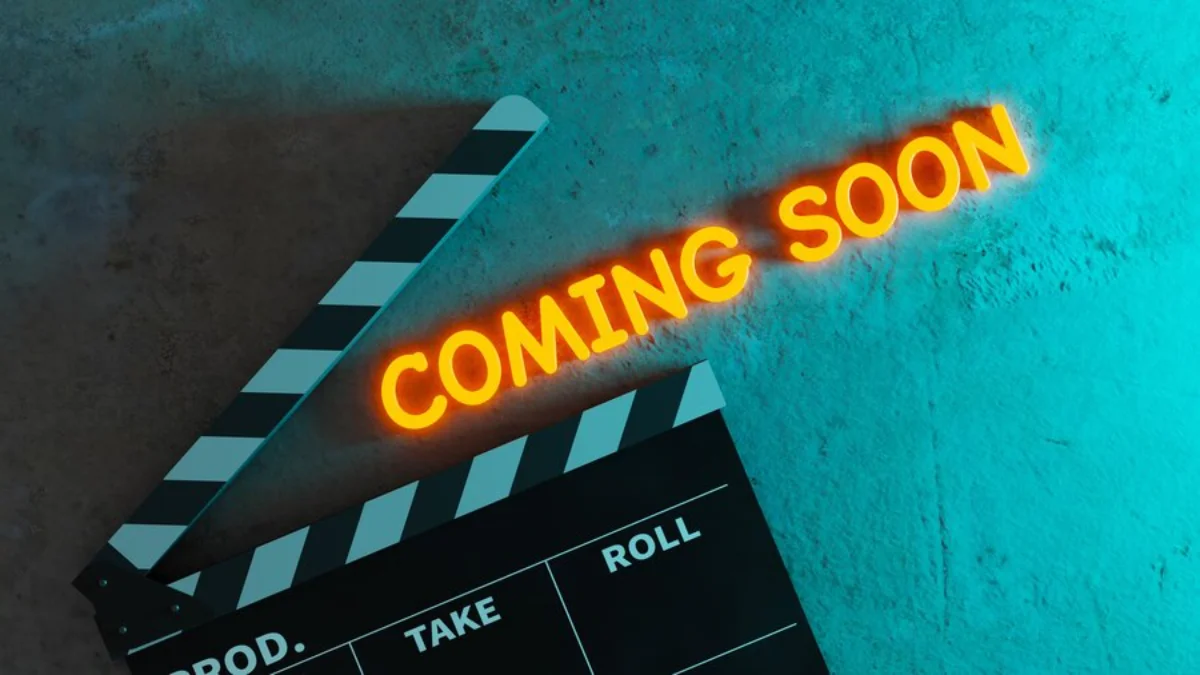How Movies Are Made: A Behind-the-Scenes Look
Have you ever wondered how your favourite movies are made? The actual process of making a movie is fascinating, involving hundreds of skilled individuals, the latest and greatest technology, and unwritten hours of work. There are many different stages in film production that lead a film from the concept to the big screen.
In this article, we’ll take you behind the scenes of creating movies, revealing some of the film industry’s secretaries and presenting the detailed steps that turn an idea into a cinematic masterpiece..
Quick Guide: The 5 Major Stages of Filmmaking
- Pre-Production – Craft the script, cast the actors, build the crew, and scout locations.
- Production – Shoot the scenes, capture sound, and begin laying the creative foundation.
- Post-Production – Edit footage, mix audio, add VFX, and fine-tune color.
- Marketing – Promote the film with trailers, posters, and campaigns.
- Distribution – Release the film in cinemas, festivals, or streaming platforms.
Pro Tip
Want to understand a film’s tone or visual style better? Pay attention to color grading and sound design—they subtly shape mood and viewer emotion behind the scenes.
Important Note
Filmmaking is highly collaborative. From directors to editors to costume designers, every movie involves hundreds of creatives working together toward a unified vision.
The Pre-Production Phase Making
Why This Is During the Pre-Production Phase Making, a movie significantly predates when the cameras begin rolling. So many things are involved in this process, but pre-production is arguably the mocriticalant phase. At this stage, filmmakers outline

1. Developing the Idea
Every movie starts with a story idea, which could come from a script, a book, an original concept, or even a true-life event. Filmmakers spend much time refining the story, developing characters, and defining the film’s themes.
- Screenwriters are often the first key players in this process. They craft the screenplay, which is the blueprint for the film.
- Producers also get involved early, working to secure funding and manage the project’s logistics.
2. Casting the Stars
Once the script is ready, the next step is to assemble the cast. Casting directors audition actors for the roles, and directors, producers, and sometimes even studio executives weigh in on the choices.
- A-list stars may already be attached to a project, especially if it’s a big-budget film.
- For indie films, casting might focus on lesser-known actors or newcomers who are right for the roles.
3. Assembling the Crew
Behind every great film is a team of talented individuals. Some of the key crew members in pre-production include:
- Director: The vision behind the film, guiding the artistic and technical aspects.
- Cinematographer (Director of Photography): This person is responsible for the film’s visual style, lighting, and camera work.
- Production Designer: Creates the film’s sets, props, and overall aesthetic.
- Costume Designer: Designs the wardrobe to suit each character and setting.
- Sound Designer: Begins thinking about how sound will affect the film’s atmosphere.
The team collaborates closely to ensure the film’s style, tone, and visual identity are locked in.
4. Securing Locations
Once the cast and crew are in place, the team scouts for locations to shoot the film. This could mean finding actual filming spots or constructing elaborate sets that bring the script to life.
- For example, departments may design and build entire sets if the film is set in a fantasy world. Filming could take place in various cities, studios, or locations around the world for films grounded in reality.
The Production Phase: Bringing the Script to Life
After months of planning, the begins production, where the actual shooting begins. This is where all the magic happens — the script comes to life, actors perform their scenes, and the crew works tirelessly to capture every moment.
1. Filming the Scenes
With everything in place, the cameras start rolling. The director works closely with the cast to bring the story to life, guiding the actors through each scene. Meanwhile, the cinematographer ensures the mismatch per the film’s aesthetic, adjusting lighting and camera angles to create the perfect shot.
- Multiple takes are often required for each scene to ensure the perfect performance and the best visuals.
- Filming can take a few weeks to several months, depending on the film’s complexity.
2. Sound and Music
While filming, the sound team constantly works to capture dialogue and ambient sounds, like footsteps or wind. A boom operator holds a microphone above the actors to record high-quality audio, while sound mixers ensure the levels are correct for the final product.
- The composer may also begin working on the film’s score, setting the tone for pivotal moments.
- Pre-recorded tracks or temporary music are sometimes used in scenes until the official score is ready.
3. Visual Effects (VFX)
In many modern films, visual effects play a significant role in bringing the story to life. Whether adding explosions, CGI characters, or creating fantastical landscapes, the VFX team works closely with the director to implement these effects during filming or post-production.
- For some films, green screen technology captures scenes interlayered with digital effects.

The Post-Production Phase: Refining the Film
Once all the scenes are filmed, the movie enters post-production, where the final piece begins to take shape. This phase involves editing the film, adding sound, music, and visual effects, and preparing the movie for release.
1. Editing the Footage
The first step in post-production is editing the footage. Editors sift through hours of raw footage and piece it together according to the script and the director’s vision.
- Montage sequences are carefully constructed to convey time or emotion.
- Directors and editors often work closely to ensure the pacing and narrative flow are correct.
2. Sound Editing and Mixing
The sound design team works to add effects, music, and dialogue to the film during this phase. This includes recording additional dialogue (ADR), sound effects, and foley work, such as footsteps or doors opening.
- Sound mixers balance the audio elementsensuringre that music, effects, and dialogue are all clear and appropriately placed in the mix.
3. Visual Effects (VFX) Completion
While some visual effects are filmed on set, most VFX are completed in post-production. These include digital elements such as CGI creatures, explosions, or creating environments that didn’t exist in the real world.
- Compositing involves blending VFX shots with live-action footage, ensuring a seamless look.
4. Colour Grading
Once the film is edited, colour grading ensures that the colours match the film’s tone. For instance, a dark, moody scene might have a cooler, desaturated colour palette, while an action-packed scene might feature bold, bright colours.
- Colourists work closely with the director and cinematographer to ensure the look matches the intended aesthetic.

The Final Touch: Marketing and Distribution
Once the film is polished, it’s ready for the next phase: distribution and marketing. This stage involves getting the film into cinemas, film festivals, and streaming platforms and generating buzz to attract audiences.
1. Marketing
Marketing teams create trailers, posters, social media campaigns, and press kits to promote the film. These efforts help build anticipation and ensure the movie gets a broad audience.
2. Premiere and Release
The film’s release can vary — some films debut at film festivals or exclusive screenings, while others have massive premieres before opening in theatres worldwide. The film may be released on streaming platforms, DVD, or Blu-ray, depending on the distribution deal.
5 Frequently Asked Questions (FAQs)
1. How long does it take to make a movie?
It depends. Indie films may take months, while big-budget blockbusters often take 1–2 years from pre-production to final release.
2. What does a director really do?
The director shapes the creative vision, guides actors’ performances, collaborates with key departments, and oversees the storytelling from script to screen.
3. What’s the difference between editing and VFX?
Editing involves assembling and pacing scenes. VFX (Visual Effects) adds digital enhancements like explosions, creatures, or fantasy environments.
4. Why is sound design important in movies?
Sound design builds atmosphere, enhances realism, and emphasizes emotion. Dialogue, music, and effects all play a crucial role.
5. What is colour grading in film?
Colour grading adjusts tones and hues in post-production to match a film’s mood—cool tones for suspense, warm tones for comfort or romance.
Conclusion: The Magic Behind Movie Making
No one person makes a movie—absolutely zero. From the conception of an idea through to the final cut, which makes it to the silver screen, Filmmakers collaborate to bring a story to life for an audience to enjoy.
Knowing the movie production process helps us realise the effort that goes into every film we watch. So next time you sit down to watch a movie, think about the incredible staff and absentees who put it together—from a director’s vision to sound editors and VFX artists who put technical brilliance into the picture.
The secrets of filmmaking are everywhere, and now you know more about what goes on behind the camera. Ready to dive deeper into the world of film? Explore more and discover the magic of cinema!